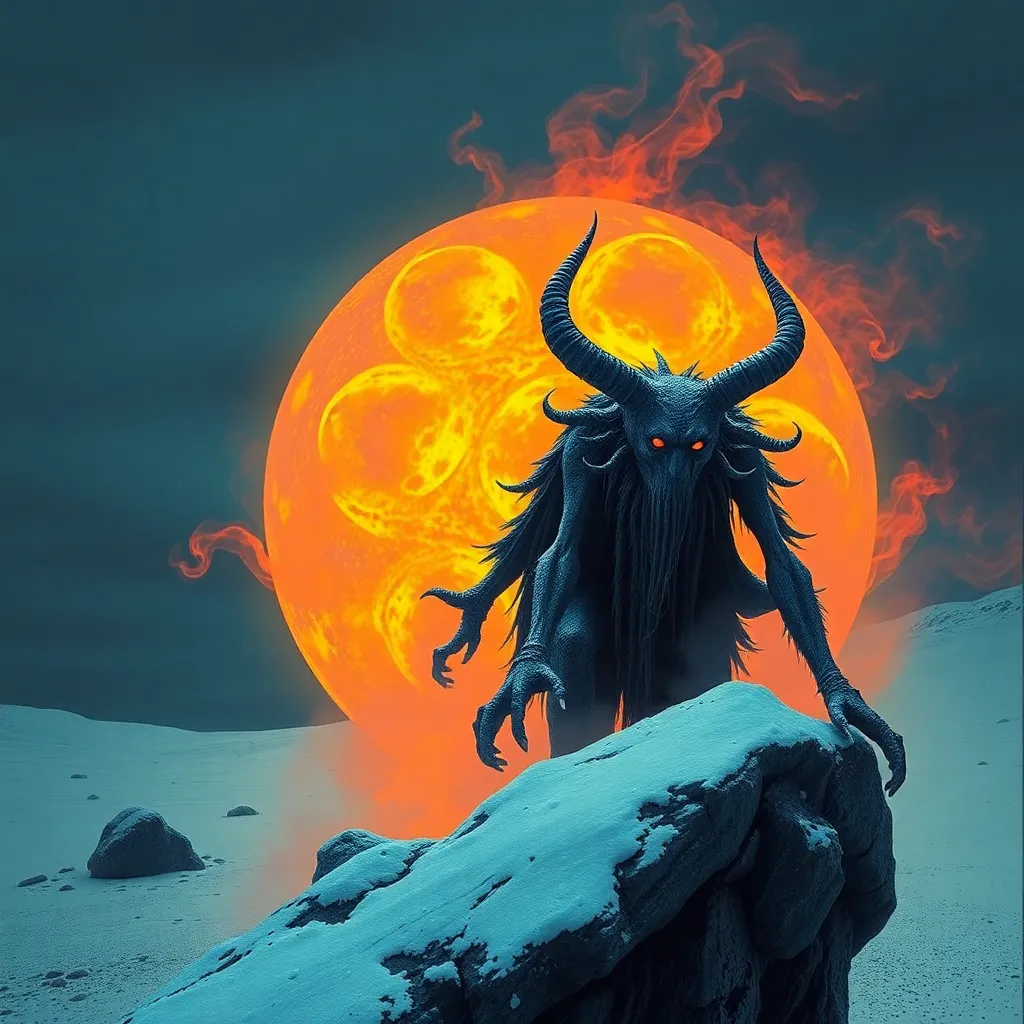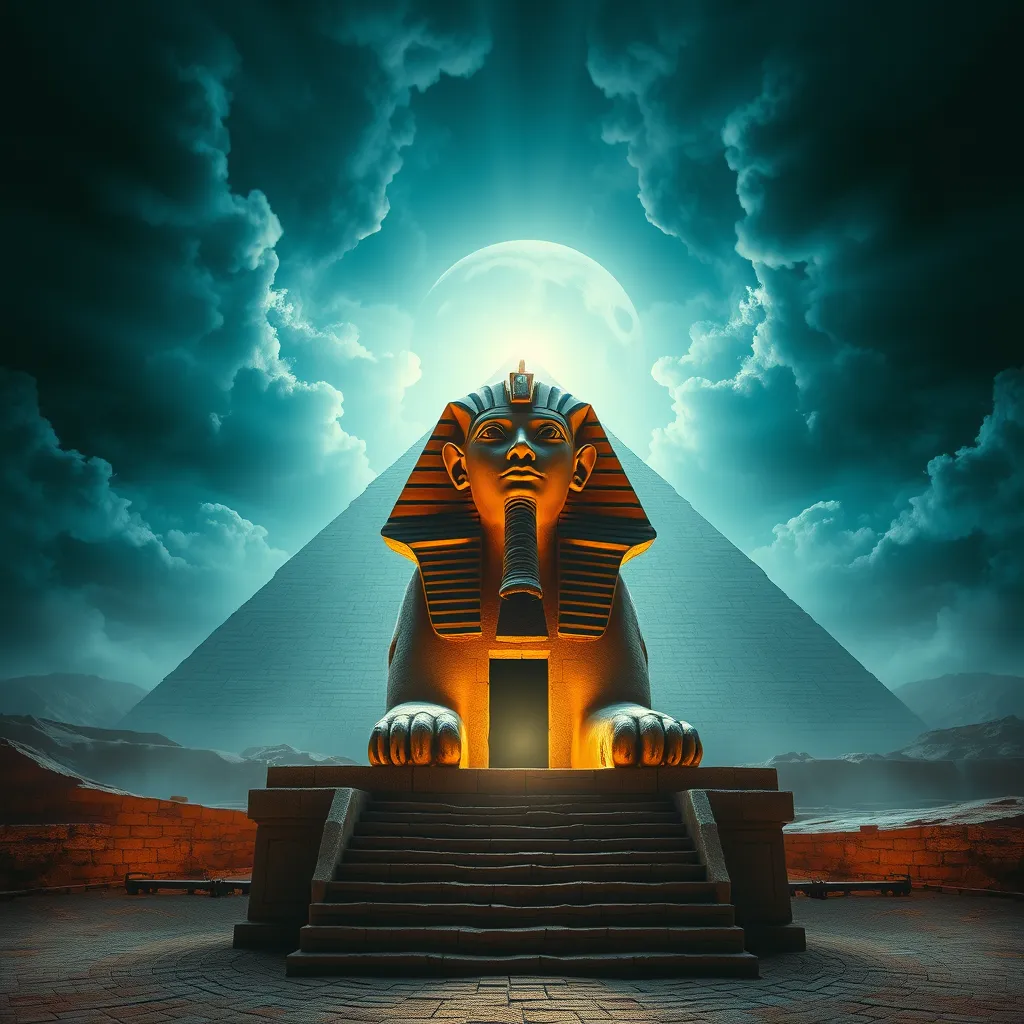The Wrath of Tengu: Examining the Fierce Rivalry Between Oni and Tengu
I. Introduction
Japanese folklore is rich with mythical creatures, two of the most prominent being the Tengu and the Oni. These figures have captured the imagination of many over the centuries and continue to play a significant role in Japanese culture. Understanding the rivalry between these two entities not only deepens our appreciation of folklore but also provides insight into the cultural dynamics of Japan.
This article aims to explore the origins, characteristics, and the nature of the fierce rivalry between Tengu and Oni. We will delve into their historical backgrounds, their depictions in various media, and the lessons that can be drawn from their ongoing feud.
II. Origins of Tengu and Oni
A. Historical background of Tengu
Tengu are often depicted as bird-like creatures, known for their martial prowess and mischievous nature. Their origins can be traced back to Buddhist and Shinto beliefs, where they were initially viewed as protective deities of the mountains and forests. Over time, Tengu evolved into more complex figures, sometimes portrayed as antagonists to human heroes.
B. Historical background of Oni
Oni, on the other hand, are typically seen as malevolent demons or ogres, often characterized by their horns, wild hair, and fearsome appearance. Their roots can be found in ancient Japanese mythology, where they were initially associated with illness and disaster. As folklore developed, Oni became synonymous with evil spirits that would terrorize villages.
C. Mythological context and cultural significance
Both Tengu and Oni hold significant places in Japanese mythology and culture. Tengu are often seen as guardians of the natural world, while Oni represent the darker aspects of humanity. Their rivalry reflects the duality of good and evil, order and chaos, which is a recurring theme in many cultures.
III. Characteristics of Tengu
A. Physical attributes and forms
Tengu are often depicted with human-like bodies and avian features. Common characteristics include:
- Long noses (particularly in the more humanoid versions)
- Feathered wings or bird-like legs
- Traditional clothing, often resembling that of a samurai
B. Powers and abilities
Tengu are known for their supernatural abilities, which include:
- Mastery of martial arts
- Shape-shifting capabilities
- Control over the winds and natural elements
C. Role in folklore and popular culture
In folklore, Tengu serve as both mentors and tricksters. They are often portrayed as guiding lost travelers or training warriors in the mountains. In contemporary culture, Tengu appear in various forms of media, such as anime and manga, often retaining their mystical and martial attributes.
IV. Characteristics of Oni
A. Physical attributes and forms
Oni are typically depicted as large, fearsome beings with:
- Brightly colored skin (often red or blue)
- Prominent horns
- Fanged mouths and wild hair
B. Powers and abilities
Oni are believed to possess a range of dark powers, including:
- Immense strength and durability
- Ability to bring misfortune or illness
- Magical capabilities, often related to curses
C. Role in folklore and popular culture
Oni serve as antagonists in many traditional stories, often representing the consequences of human vices. In modern media, Oni have also been adapted into various forms, including video games and films, often emphasizing their fearsome nature and supernatural powers.
<h2)V. The Nature of the Rivalry
A. Historical events leading to conflict
The rivalry between Tengu and Oni can be traced back to their differing roles in folklore. Tengu, as guardians of the mountains, often clashed with Oni, who were seen as destructive forces threatening human lives. This conflict is symbolized in various myths where Tengu confront Oni to protect humanity.
B. Symbolic meanings of the rivalry
The feud between Tengu and Oni symbolizes the eternal struggle between good and evil. Tengu represent the protective forces of nature, while Oni embody chaos and destruction. This dynamic illustrates the balance that must be maintained within the natural and human worlds.
C. Key myths and stories depicting their feud
Several myths depict the confrontations between Tengu and Oni. One notable story involves a Tengu warrior who defeats an Oni that terrorizes a village, emphasizing the theme of good triumphing over evil. These stories serve not only as entertainment but also as moral lessons about courage and the importance of protecting the innocent.
VI. Cultural Representations of the Rivalry
A. Tengu and Oni in literature
Both creatures have been featured in classical literature, such as the “Konjaku Monogatari,” where their interactions highlight their contrasting natures. These stories often convey moral lessons relevant to the society of the time.
B. Artistic depictions in traditional and modern media
In traditional art, Tengu and Oni are often illustrated in ukiyo-e prints, showcasing their distinct characteristics and roles. Modern adaptations in anime and manga continue to explore their rivalry, often adding new dimensions to their personalities and interactions.
C. Influence on contemporary pop culture (anime, film, etc.)
In contemporary culture, Tengu and Oni are prevalent in various forms of media, including:
- Anime series like “Nura: Rise of the Yokai Clan”
- Video games such as “Okami”
- Films that explore Japanese folklore themes
Their ongoing presence in popular culture reflects their lasting impact and the enduring fascination with their rivalry.
VII. The Lessons from the Tengu and Oni Rivalry
A. Moral and ethical implications
The rivalry between Tengu and Oni offers moral lessons about the consequences of one’s actions. Tengu often serve as reminders of the importance of balance and protecting the weak, while Oni represent the dangers of unchecked ambition and malevolence.
B. Reflections on conflict and resolution
This rivalry also highlights the potential for conflict in society and the need for resolution. The stories often convey that through courage and wisdom, conflicts can be overcome, and harmony can be restored.
C. Relevance in modern society
In today’s world, the themes of the Tengu and Oni rivalry resonate with issues such as environmental protection and the struggle against injustice. Recognizing the importance of balance between nature and humanity is more relevant than ever.
VIII. Conclusion
A. Summary of key points
In summary, the rivalry between Tengu and Oni is not just a fascinating aspect of Japanese folklore but also a reflection of deeper moral and ethical themes. Their characteristics, origins, and the nature of their conflict provide valuable insights into the cultural landscape of Japan.
B. The enduring legacy of Tengu and Oni
The legacy of Tengu and Oni continues to thrive in modern culture, demonstrating the lasting impact of folklore on contemporary society. Their stories serve as a bridge between past and present, reminding us of the values that have shaped human experience.
C. Final thoughts on their rivalry and cultural impact
As we explore the tales of Tengu and Oni, we gain not only an understanding of their rivalry but also a glimpse into the complexities of human nature. Their stories encourage us to reflect on our own conflicts and the lessons we can learn from them.



